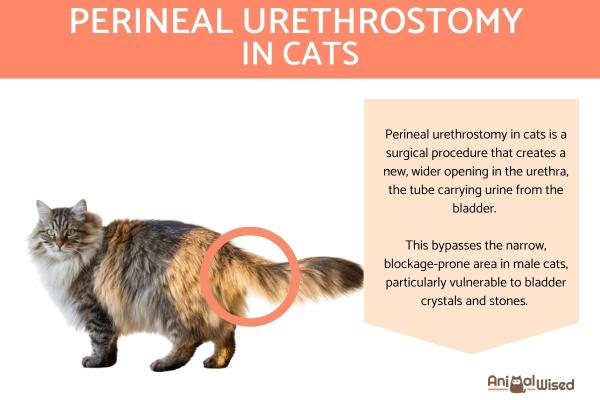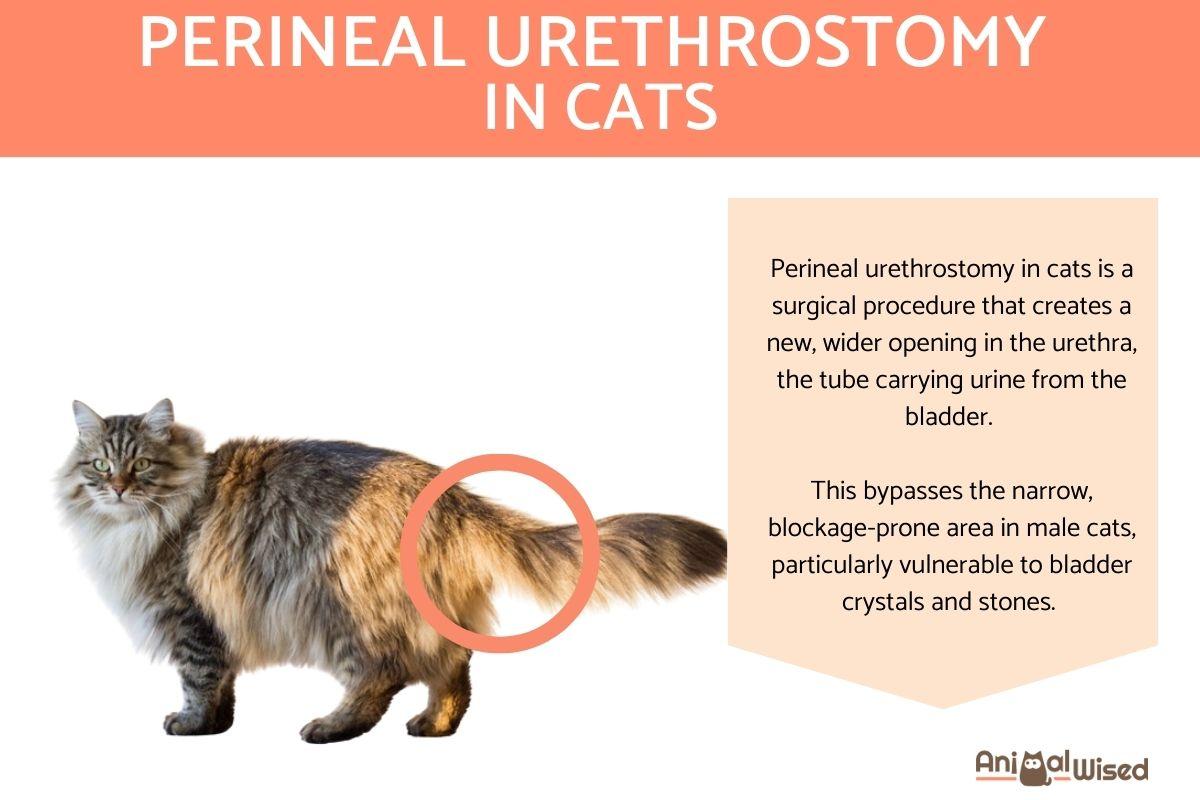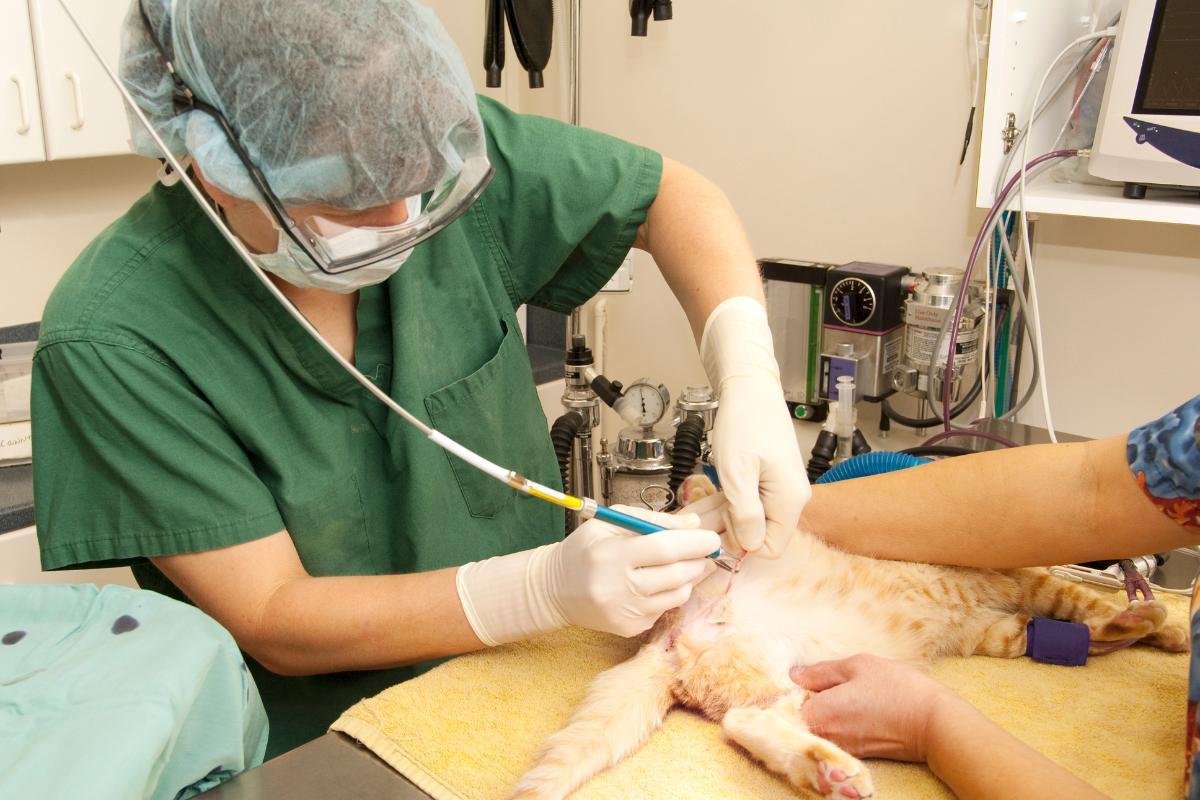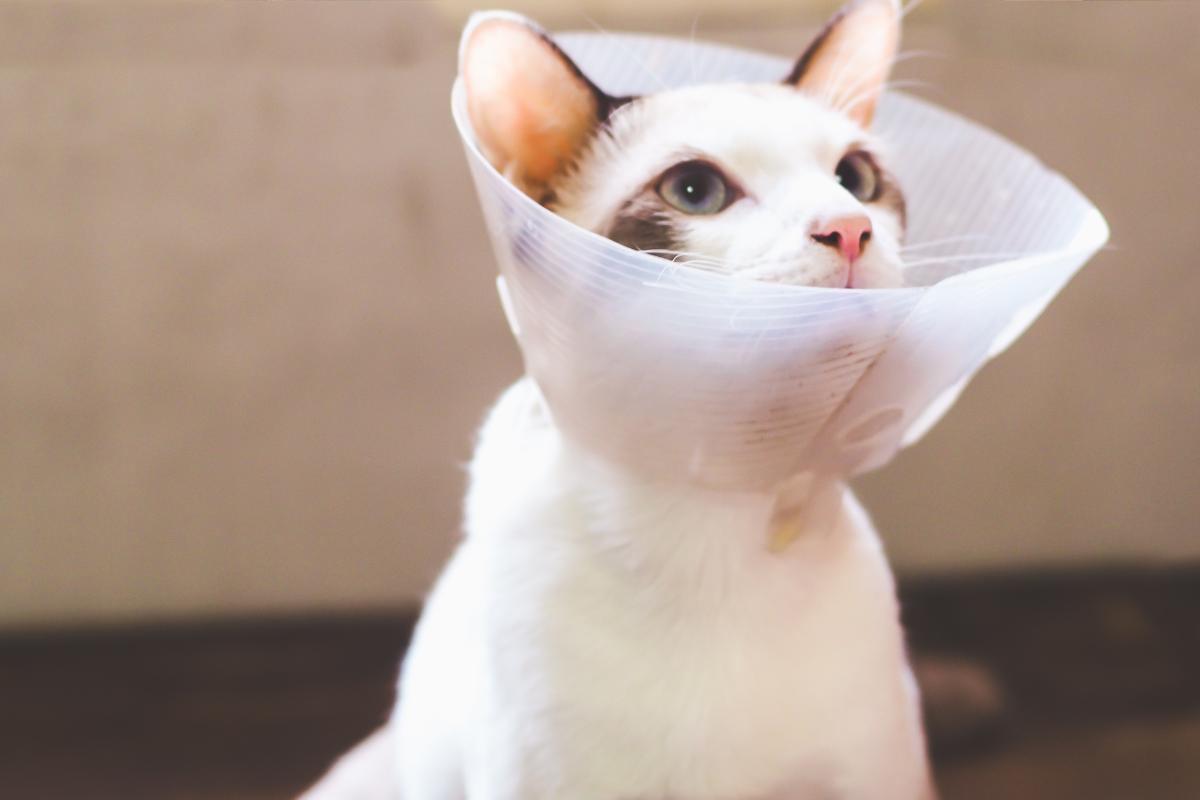What Is Perineal Urethrostomy in Cats?



See files for Cats
Feline lower urinary tract disease (FLUTD) is a prevalent condition affecting cats, often characterized by recurrent urinary blockages. These blockages can be painful, distressing, and life-threatening. Perineal urethrostomy is a surgical procedure designed to address this issue by creating a wider opening for urine to flow, effectively bypassing the narrow and vulnerable areas prone to obstruction.
The following AnimalWised article explores what perineal urethrostomy in cats is. We delve into the procedure's intricacies, ranging from potential side effects and complications to its numerous benefits and insights into life expectancy.
- What is a perineal urethrostomy in cats?
- How long does a cat perineal urethrostomy take?
- What are the indications for perineal urethrostomy in cats?
- Is perineal urethrostomy worth it?
- What is the aftercare for a perineal urethrostomy in cats?
- What are the side effects of urethrostomy in cats?
- What is the life expectancy of a cat with a perineal urethrostomy?
What is a perineal urethrostomy in cats?
Feline urethrostomy is a surgical procedure employed in cats to address recurrent strictures, irreparable obstructions, anatomical defects, or instances of feline urethral obstruction, particularly those caused by stones. The primary goal of this procedure is to create a new opening for the urinary tract, ensuring improved urinary flow.
Performed through various approaches, including prescrotal, scrotal, prepubic, or perineal. The perineal method is commonly preferred in feline cases. This approach offers a shorter, wider, and straighter urethra, enhancing the effectiveness of the procedure.
How does a perineal urethrostomy work?
- During the surgery, the veterinarian removes a section of the urethra in the perineum and creates a new, wider opening for urine to flow out.
- This bypasses the narrow part of the urethra that is prone to obstruction by crystals or stones.
- The new opening allows easier urination and helps prevent future blockages, relieving pain and discomfort for the cat.
The new, wider opening makes it much less likely for crystals or stones to block the urethra. Furthermore, cats who are frequently blocked experience significant pain and distress. This surgery can provide them with significant relief and allow them to live a more normal life.
Once fully recovered, cats that have undergone this surgery typically no longer need repeated catheterizations, which can be uncomfortable and stressful for both the cat and owner.
How long does a cat perineal urethrostomy take?
The urethrostomy procedure typically spans a duration of approximately two to four hours, contingent on the complexity of the case and the surgeon's expertise.
It is advisable to bring your cat to the clinic or hospital early in the morning, ensuring that its health has been thoroughly assessed and confirmed to be stable through a comprehensive pre-anesthetic examination.
Upon readiness, the surgical area is meticulously prepared by shaving and cleaning to minimize the risk of infection by eliminating bacteria. Anesthesia is then administered to the cat, initiating the surgical process. This careful preparation ensures a controlled and sterile environment for the procedure.
It's important to emphasize that the duration of the urethrostomy, as well as the specific pre-operative and post-operative care requirements, may vary based on individual cases. Veterinarians play a crucial role in tailoring the approach to the unique needs of each cat.

What are the indications for perineal urethrostomy in cats?
For cats with severe or recurring urinary blockages, urethrostomy can be a lifesaver. This procedure is often recommended when medication or other treatments aren't effective due to various factors, like stubborn crystals or anatomy that makes it harder for urine to pass.
Feline Lower Urinary Tract Disease (FLUTD) is the main culprit behind this need, especially when stones or tumors are involved. While crystals in urine are common, especially struvite crystals, trouble arises when they clump with mucus, forming a blockage. This can lead to strictures or complete urethral obstructions, causing immense pain and distress for your cat.
Male cats have longer and narrower urethras, making them more vulnerable to blockages. Urethrostomy becomes a lifesaver in such cases, alleviating the immediate crisis and preventing future blockages, allowing your cat to enjoy a normal life again.
Is perineal urethrostomy worth it?
Whether perineal urethrostomy is worth it for your cat depends on a variety of factors, and there's no single answer that applies to all cases. Here are some things to consider:
Benefits:
- Significantly reduces the risk of future urinary blockages. This is the biggest advantage, as recurrent blockages can be incredibly painful and even fatal for cats.
- Improves quality of life by eliminating pain and discomfort associated with blockages. The surgery allows cats to live a more active and enjoyable life.
- Reduces stress and anxiety since frequent blockages can be stressful for both the cat and their owner, and the surgery can provide significant peace of mind.
- Eliminates the need for repeated catheterization, which can be a painful and stressful experience for cats.
Drawbacks:
- Surgery carries inherent risks. As with any surgery, there are potential risks of infection, bleeding, and urinary incontinence.
- Recovery involves post-operative care and monitoring.
- The surgery itself and any associated care can be expensive.
- Some cats may not be good candidates for the surgery due to other health conditions or age.
Ultimately, the decision of whether or not to proceed with perineal urethrostomy is best made in consultation with your veterinarian. They can consider your cat's specific situation and medical history, weigh the potential benefits and risks, and discuss alternative options.
What is the aftercare for a perineal urethrostomy in cats?
During the postoperative phase following an urethrostomy in cats, adhering to the following recommendations is crucial for the well-being and successful recovery of the feline patient:
- Ensure the use of an Elizabethan collar to prevent the cat from accessing the surgical site, licking, or causing self-inflicted damage. This precautionary measure is essential for facilitating an undisturbed healing process and typically spans a period of 10 to 14 days.
- Administer analgesic therapy, such as the drug buprenorphine, to alleviate pain and enhance the cat's comfort during the recovery period.
- Apply barrier dressings, such as zinc oxide or Vaseline, on the skin to minimize manipulation of the perineal area. This not only aids in controlling urine scalding but also promotes a cleaner and less disruptive healing environment.
- Ensure that the cat has constant access to water and food, promoting proper nutrition and hydration throughout the recovery process.
- Restrict the movement of the operated cat indoors during the healing period to prevent potential damage to the surgical wound. Outdoor activities should be avoided until the veterinarian provides clearance.
- Regularly monitor the cat's urination patterns, ensuring that it urinates at least once every 24 hours. Any deviation from normal urination should be promptly reported to the veterinarian.
Remember that each cat is unique, so for specific guidance tailored to the individual case, consulting with a qualified veterinarian is essential.
While perineal urethrostomy tackles blockages, complete urinary cessation requires further investigation. Explore potential causes and treatment options in our article.

What are the side effects of urethrostomy in cats?
While urethrostomy in cats is a surgical procedure that can effectively address certain urinary issues, it is important to be aware of potential side effects and complications that may arise. Some of the possible side effects and complications include:
- Bleeding: surgical procedures always carry a risk of bleeding. Excessive bleeding may occur during or after the surgery, and it's essential for the veterinarian to monitor and address this.
- Infections: can occur at the surgical site. Proper postoperative care, including the use of antibiotics as prescribed by the veterinarian, helps minimize the risk of infection.
- Urinary incontinence: some cats may experience urinary incontinence post-urethrostomy. This could be temporary or, in rare cases, become a long-term issue. Medications or other interventions may be required to manage this.
- Stricture formation: while the surgery aims to alleviate strictures, there is a risk of new strictures forming. This can hinder the flow of urine and necessitate further medical attention.
- Scar tissue formation: the formation of scar tissue is a common part of the healing process. However, excessive scar tissue could lead to complications such as recurrent obstructions.
- Behavioral changes: cats may exhibit behavioral changes post-surgery. Stress or discomfort associated with the procedure may cause changes in eating habits, grooming behavior, or overall temperament.
- Recurrence of urinary issues: in some cases, despite the surgery, there may be a recurrence of urinary issues. This can be influenced by factors such as the cat's overall health, diet, and any underlying medical conditions.
It's important to note that the likelihood and severity of these side effects can vary among individual cats. Veterinary monitoring and adherence to postoperative care instructions are crucial for minimizing complications and ensuring a smooth recovery.
While perineal urethrostomy addresses physical blockages, crystal formation is a separate yet crucial aspect of feline urinary health. For further understanding, consult our informative article.
What is the life expectancy of a cat with a perineal urethrostomy?
The life expectancy of a cat with a perineal urethrostomy can vary based on several factors, including the cat's overall health, the underlying reason for the urethrostomy, the success of the surgical procedure, and the management of postoperative care.
In general, many cats that undergo perineal urethrostomy can go on to lead normal, healthy lives with a normal lifespan.
While this article explored the surgical solution for feline urinary blockages, red in the litter box can be a different story. For a deeper dive into the potential causes and solutions behind bloody cat urine, explore our follow-up article.
This article is purely informative. AnimalWised does not have the authority to prescribe any veterinary treatment or create a diagnosis. We invite you to take your pet to the veterinarian if they are suffering from any condition or pain.
If you want to read similar articles to What Is Perineal Urethrostomy in Cats?, we recommend you visit our Other health problems category.
- García, F., Andaluz A., Moll, X. (sf). Urinary System Surgery II. B. Braun VetCare, SAB







